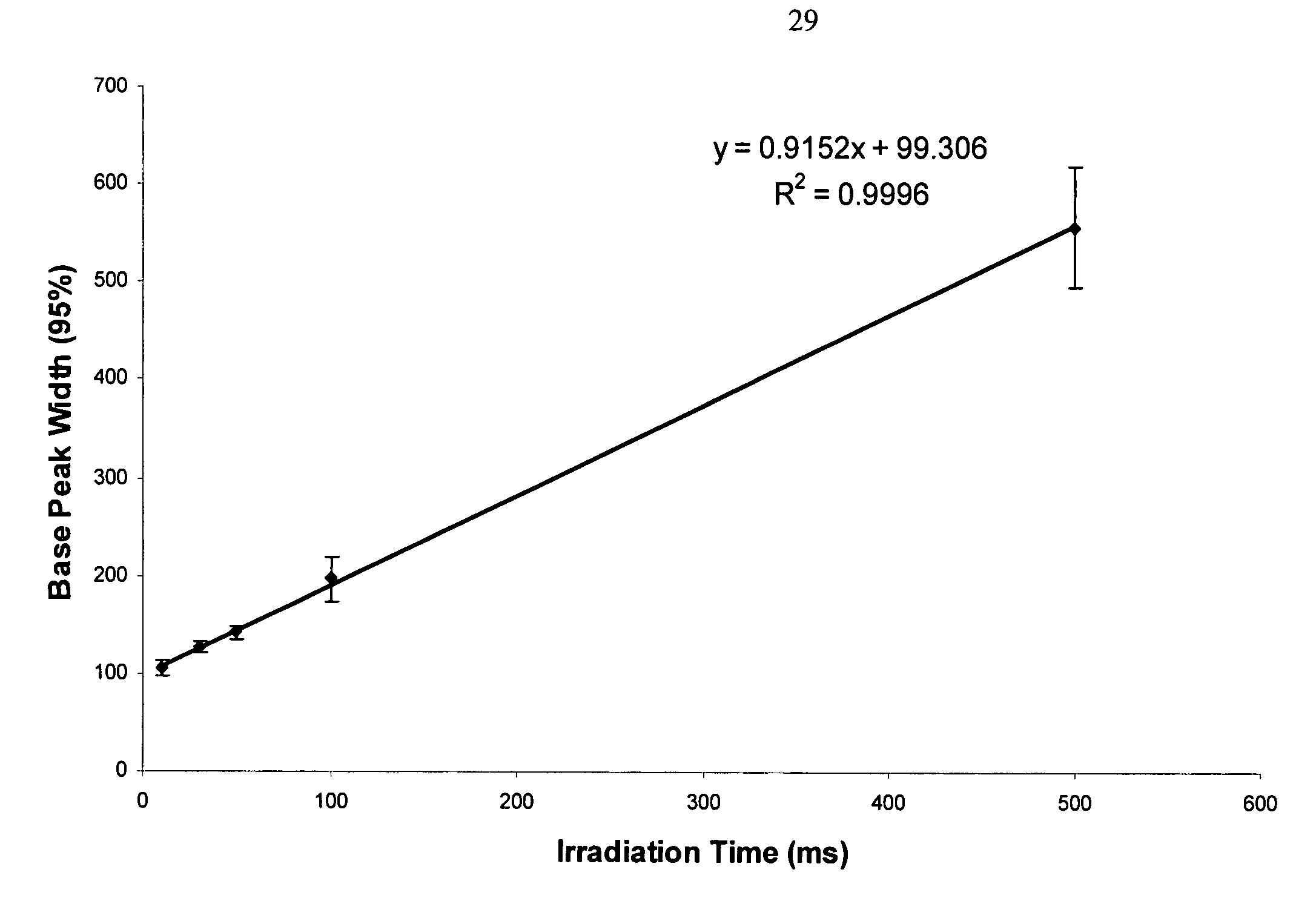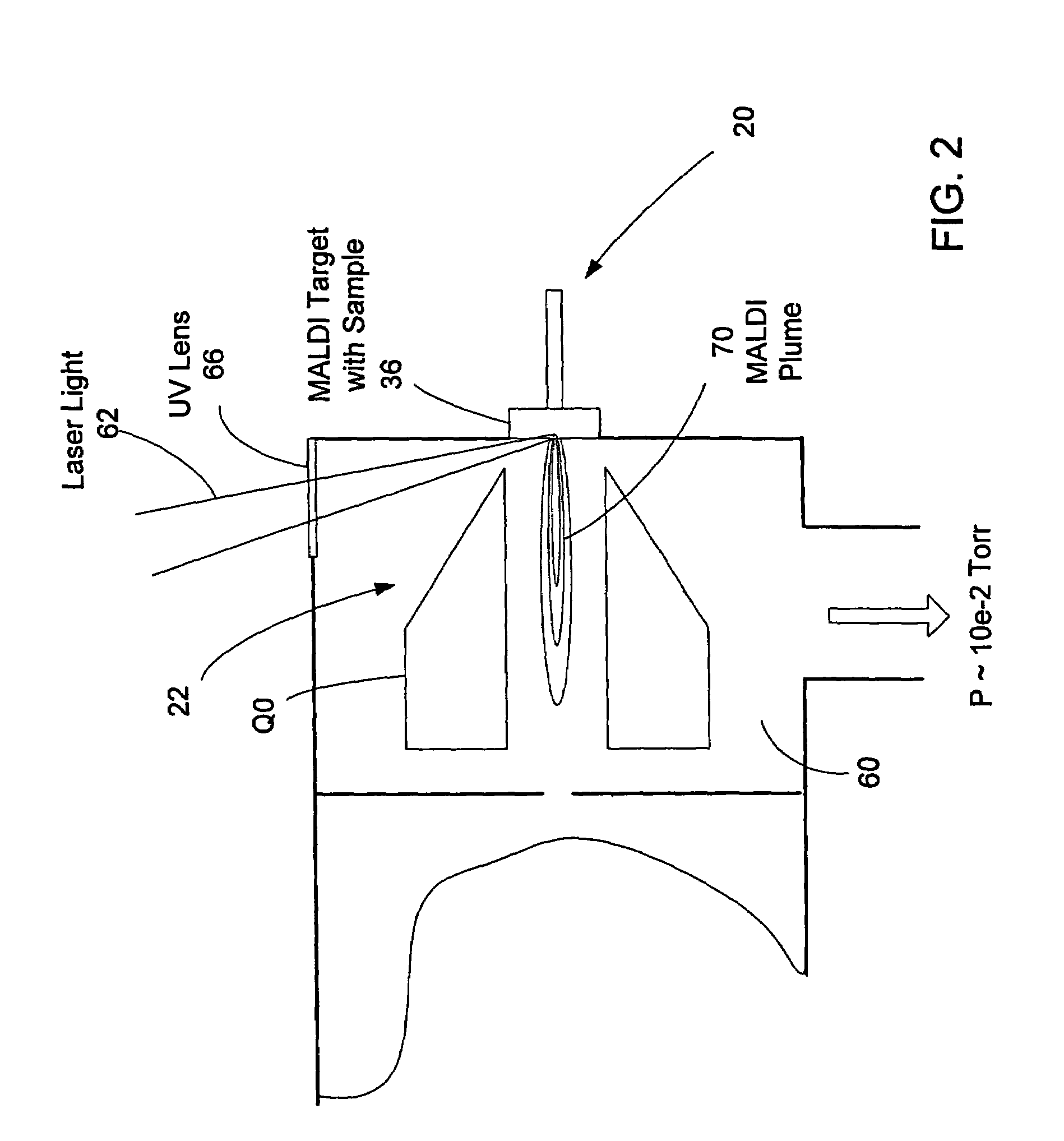Method and system for high-throughput quantitation using laser desorption and multiple-reaction-monitoring
a laser desorption and quantitation technology, applied in the field of mass spectrometry, can solve the problems of low quantitation accuracy, low quantitation accuracy, and inability to achieve true ms/ms with this type of instrument, and achieve the effect of improving quantitation throughput and improving measurement sensitivity
- Summary
- Abstract
- Description
- Claims
- Application Information
AI Technical Summary
Benefits of technology
Problems solved by technology
Method used
Image
Examples
Embodiment Construction
[0027]Referring now to the drawings, wherein like reference numerals refer to like elements, FIG. 1 shows an embodiment of a mass spectrometer system that includes an ion source and a mass analyzer. In accordance with the invention, the ion source is a matrix-assisted-laser-desorption ion (MALDI) source 20 coupled to a collision-damping setup 22, and the mass analyzer is a triple-quadrupole device 30 that is operated in the multiple-reaction-monitoring (MRM) mode. To activate the MALDI ion source, laser light or typically pulses of laser light generated by a laser 40 is directed onto a sample target 36 of the MALDI ion source 20. As described in greater detail below, in one mode of operation, the laser may be of a type capable of firing at a pulse rate of a relatively high rate, such as about 500 Hz or higher. In accordance with a feature of the present invention, the laser may be a continuous laser, and the irradiation period for each sample spot is controlled to be significantly s...
PUM
 Login to View More
Login to View More Abstract
Description
Claims
Application Information
 Login to View More
Login to View More - R&D
- Intellectual Property
- Life Sciences
- Materials
- Tech Scout
- Unparalleled Data Quality
- Higher Quality Content
- 60% Fewer Hallucinations
Browse by: Latest US Patents, China's latest patents, Technical Efficacy Thesaurus, Application Domain, Technology Topic, Popular Technical Reports.
© 2025 PatSnap. All rights reserved.Legal|Privacy policy|Modern Slavery Act Transparency Statement|Sitemap|About US| Contact US: help@patsnap.com



